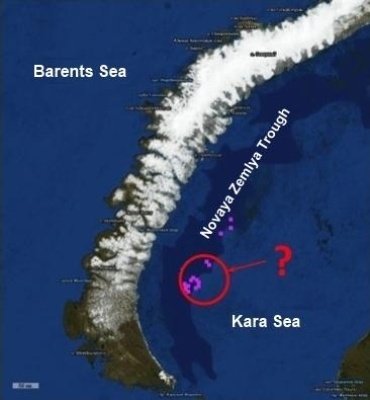
From Ukraine peace plans to Kazakh uranium—all that and more in our new nuclear digest
Our November Nuclear Digest by Bellona’s Environmental Transparency Center is out now. Here’s a quick taste of just three nuclear issues arising in U...
News

Publish date: July 24, 2015
Written by: Charles Digges
News
A Russian group of nuclear technicians will in November head to Italy for training on a vessel called the Itarus that would be able to lift sunken nuclear reactors and other radioactive litter scuttled by the Soviet Navy in Arctic waters over decades, various news agencies reported.
The vessel will also be used to transport less unconventionally decommissioned reactors to dismantlement points – a lingering issue in cleaning up Northwest Russia’s Cold War nuclear legacy.
No cost for the new vessel was released by Russian news agencies and it remains unclear whether it is a donation toward multilateral nuclear cleanup efforts agreed to 12 years ago. Rosatom’s press office was unavailable for comment.
Anatoly Zakharchyov, head of Russian nuclear state corporation Rosatom’s engineering division for complex submarine dismantlement, told the REGNUM Russian news service, further said that Russian technicians had just returned from Italy where they observed preliminaries on the construction of the new ship.
The crew going in November will learn how to operate the floating-dock type vessel, which could be put to use retrieving many of the enormous finds of Naval reactors, radioactive waste containers, and even nuclear submarines that Russian Navy sources told Bellona were scuttled in the Kara and Barents Seas, off Murmansk and north of Siberia.
 A photograph of the K-159′s conning tower taken during a mission to inspect its condition. (Photo: Courtesy of Blogger51)
A photograph of the K-159′s conning tower taken during a mission to inspect its condition. (Photo: Courtesy of Blogger51)
“A delegation from Rosatom just returned from Italy,” he was quoted as saying by REGNUM. “We were invited so they could show us the progress of construction of the floating dock for raising reactor blocks, and their further transportation to Sayda Bay for dismantlement.”
The start of the vessel’s construction, said Zakharchyov is expected in September. By November, he said, it should be launched onto the water for tests.
“Our Russian will crew head off for there for training,” he said, as quoted by the agency. “By April, the new floating dock ship should be in Murmansk.”
Because the Itarus is designed bear loads of up to 3,500 tons, it was decided that after it runs its course of delivering decommissioned marine reactors to Sayda Bay, it will be put to work raising Soviet Era nuclear trash from the Russian Arctic seafloor.
Rosatom has yet to decide where this legacy waste will be stored.
Rosatom had said several times it would embark on a plan to depopulate Arctic areas of the largely military nuclear waste, which includes 17,000 containers of radioactive waste, 19 ships containing radioactive waste, 14 nuclear reactors, including five that still contain spent nuclear fuel; 735 other pieces of radioactively contaminated heavy machinery, and the K-27 nuclear submarine with its two reactors loaded with nuclear fuel.
Joint Russian and Norwegian expeditions to the K-27 and another sunken sub, the K-159, suggest neither pose imminent contamination risks. But experts on both sides agree it’s better to get them out of the water sooner than later, before radioactive leakage becomes an urgent problem.
Zakharchyov said the reinvigoration of Gremikha naval nuclear waste storage facility could be a critical storage site for undersea nuclear hazards netted by the Itarus.
“An infrastructure has been created at Gremikha, the personnel we have is more prepared than in the past,” said Zakharchyov. “Our future goal is to preserve Gremikha for this work, which will be possible when we begin cleaning up the arctic of submerged and sunken nuclear installations.”
One of the crucial difficulties in raising the radioactive trash at the bottom of Russia’s Arctic seas has been determining who is actually responsible for the refuse that’s been mapper.
Zakarchyov said that Gremikha would serve as a vital link toward Arctic reclamation whenever – and by whoever – the hazards are raised.
“I don’t know who will do it – the Ministry of Defense, the Ministry of Emergency Services – but [Rosatom] will participate as needed, “ he said.
 The Rossita, an Italian-built ship given to Russia for nuclear waste transport. (Source: Courtesty of the Barents Observer)
The Rossita, an Italian-built ship given to Russia for nuclear waste transport. (Source: Courtesty of the Barents Observer)
The Itarus is not Italy’s first foray into helping Russia with vessels for maritime nuclear cleanup. The first was the Rossita , a €70 million vessel built to handle universal container transport for spent nuclear fuel and radioactive waste of all types, including the removable portion of nuclear reactors aboard Alpha Class Russian nuclear submarines.
Delivered to Russia in 2011, the Rossita, the vessel was part of the G-8 Global Partnership agreement, a 2003 accord on multilateral cooperation toward dismantling Russia’s Cold War Nuclear legacy. It saw no active duty until three years after it’s arrival in Russia.
In 2014, Russia finally put it to work transporting solid radioactive waste from submarines at Gremikha to storage at Sayda Bay.

Our November Nuclear Digest by Bellona’s Environmental Transparency Center is out now. Here’s a quick taste of just three nuclear issues arising in U...

For three years now, Bellona has continued its work in exile from Vilnius, sustaining and expanding its analysis despite war, repression, and the collapse of international cooperation with Russia in the environmental and nuclear fields

The Board of the Bellona Foundation has appointed former Minister of Climate and the Environment Sveinung Rotevatn as Managing Director of Bellona No...

Økokrim, Norway’s authority for investigating and prosecuting economic and environmental crime, has imposed a record fine on Equinor following a comp...